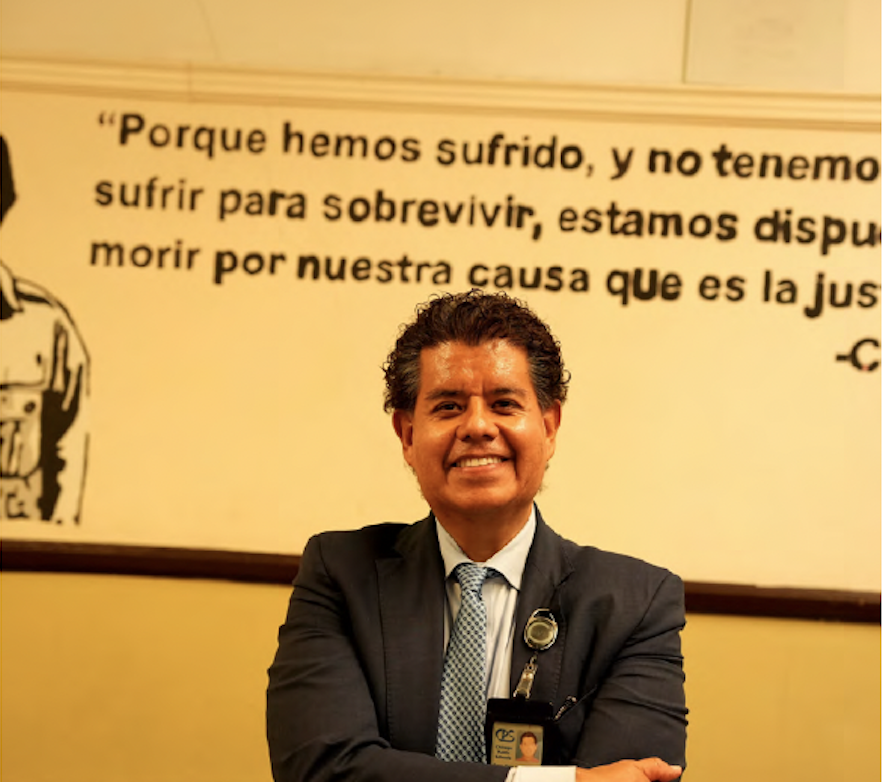By Javier Arriola-López, Principal, Rachel Carson Elementary
I feel an immense sense of pride and connection as a Mexican-American, celebrating the richness of my origins, the power of my Spanish and English languages, and the depth of my culture during Hispanic Heritage Month. However, my profound pride extends to the tapestry of contributions that all of Latin America has woven into the fabric of the United States.
The impact of the broader Hispanic community is truly limitless and transformative. We haven’t just added to the American experience—we’ve mainstreamed it, bringing with us our vibrant traditions, distinctive food, powerful identity, and a shared vision for a better future.
Our Hispanic spirit is defined by entrepreneurship and an unrelenting pursuit of opportunity. We are a community built on the conviction that through hard work and focused determination, financial independence and educational advancement are achievable realities. This drive, rooted in the values of countless Latin American nations, serves as an economic engine for the U.S.
The flavors, sounds, and celebrations of Latin America are now indispensable to the American cultural landscape:
- Culinary Revolution: Latin American gastronomy has become essential. Think of the ubiquity of tortillas, guacamole, and carne asada from Mexico and Central America; the delicious complexity of pupusas from El Salvador; the versatile arepas of Venezuela and Colombia; or the savory plantain genius of jibaritos from Puerto Rico. These aren’t just foreign foods; they are American staples.
- Rhythmic Transformation: Latin American music has popularized and cemented its influence across the nation’s airwaves. Genres like regional mexicano (including mariachi and banda) and the pulsating rhythms of salsa, merengue, reggaeton, cumbia, and bachata have enriched American music, creating vibrant, cross-cultural soundscapes that get everyone dancing.
- Celebratory Mainstreaming: Celebrations like the magnificent quinceañera have become widely recognized cultural touchstones, marking the transition to adulthood with grace and splendor, demonstrating the beauty of our traditions.

Celebrating Hispanic Heritage Month at our school, Rachel Carson, feels like a full-circle moment. As one of CPS’s premier dual language schools, we are a living testament to the power of bilingualism, biliteracy, and multiculturalism.
The recent arrival of new students, many of whom are Central American refugees, has profoundly enriched
and diversified our school’s population. We proudly welcomed students from nations like Honduras, Dominican Republic, Guatemala, El Salvador, Nicaragua, Colombia, Peru, Ecuador, and Venezuela. This has been a blessing not only for our dual language education program but especially for our historically Mexican-American student body. It’s common now to hear students exchanging and sharing the names of different foods they eat at home, and our Spanish language is being beautifully enriched as we learn new vocabulary and regional expressions from across the continent.
During this celebratory month, every grade level is immersed in expanding their knowledge of a specific Latin American country. Students are actively learning about the significance of each nation’s flag, their unique foods, native plants and animals, vital bodies of water, and cherished traditions.
Our educational mission as a dual language school is clear: we envision students who not only maintain their Spanish language while mastering English but who also walk with unwavering pride in their bicultural identity, ultimately becoming biliterate.
As we often say at Carson, our dual language scholars are the new Americans—adults who will seamlessly operate with two defined yet interconnected cultures and languages. We wholeheartedly believe that speaking another language is a talent—a valuable gift that is not universal. This conviction is the heart of how we celebrate our Hispanic Heritage Month: by honoring and cultivating this incredible talent within every student who walks our hallways.

